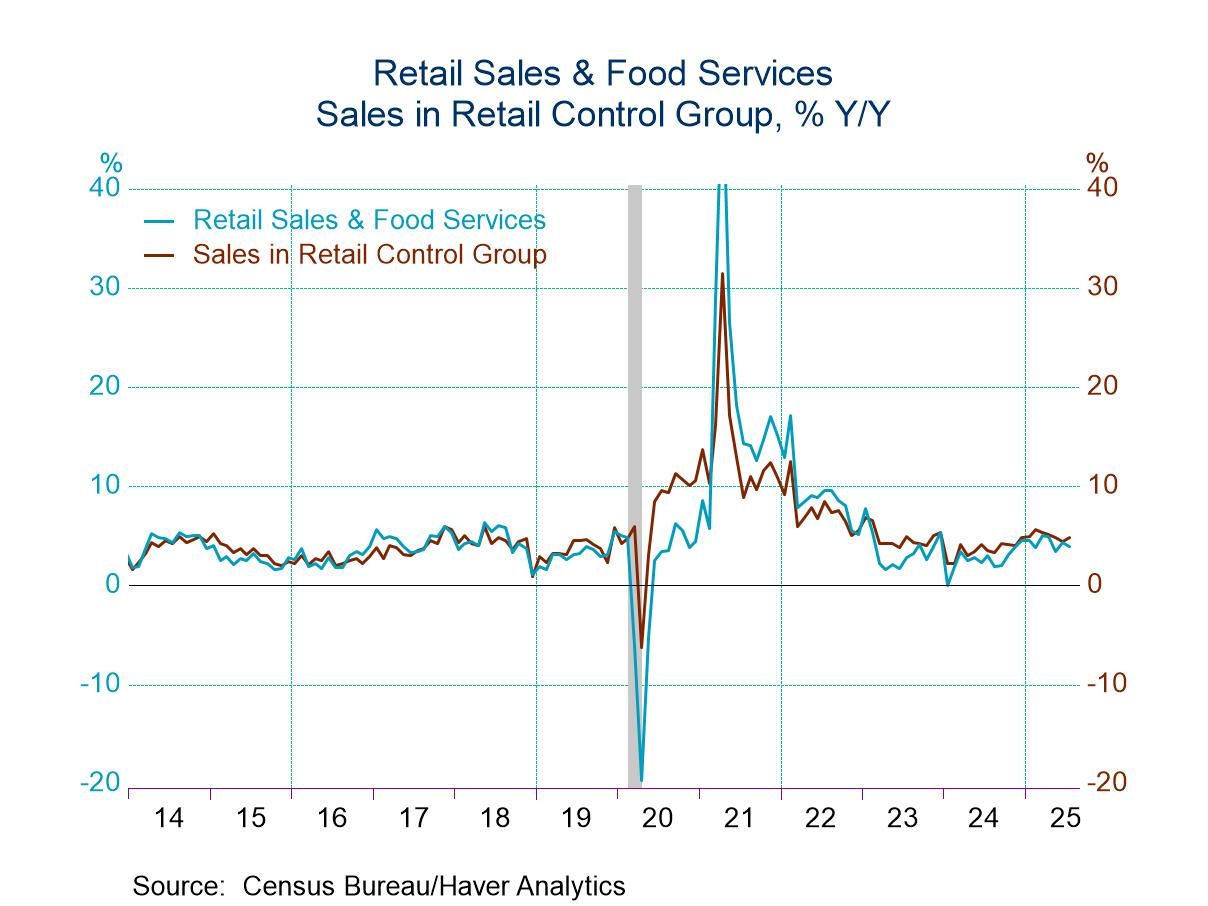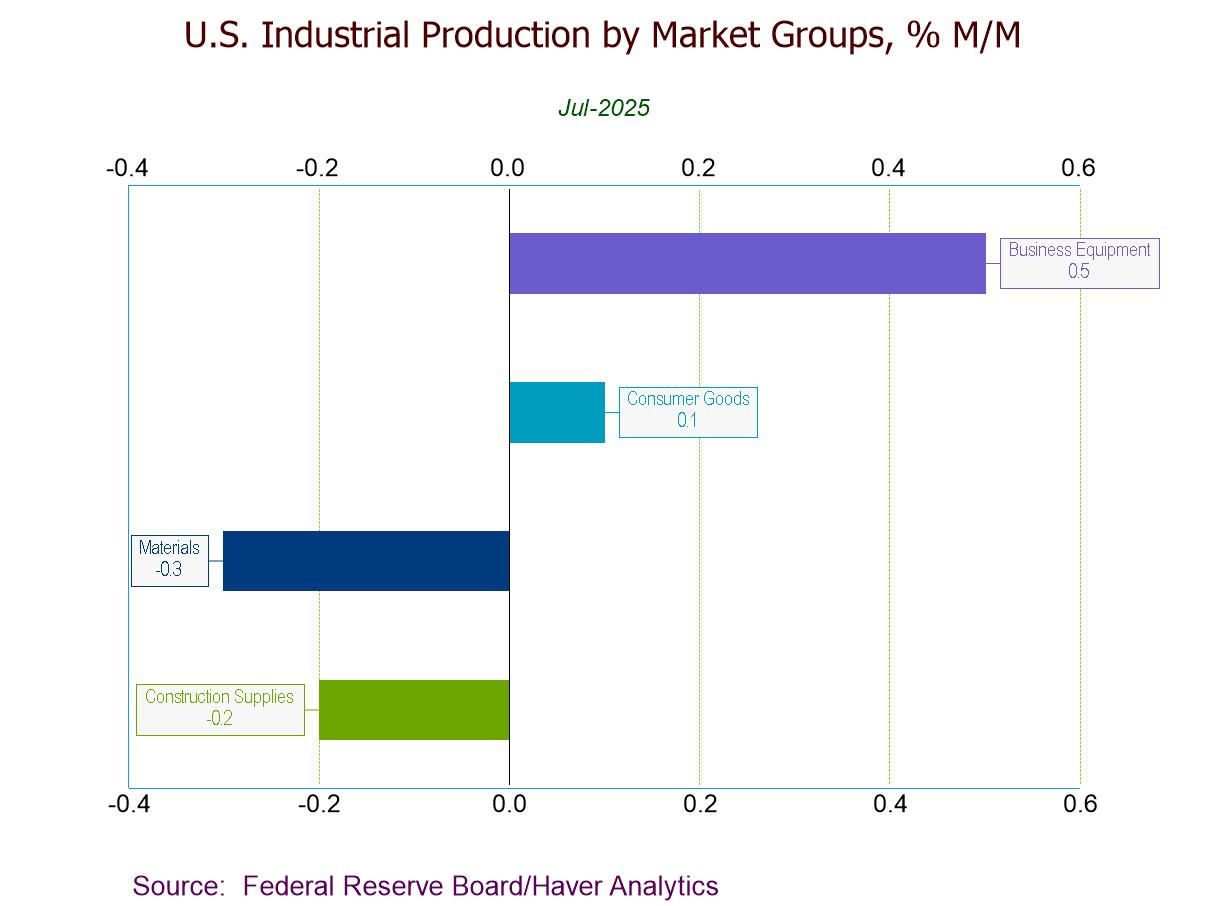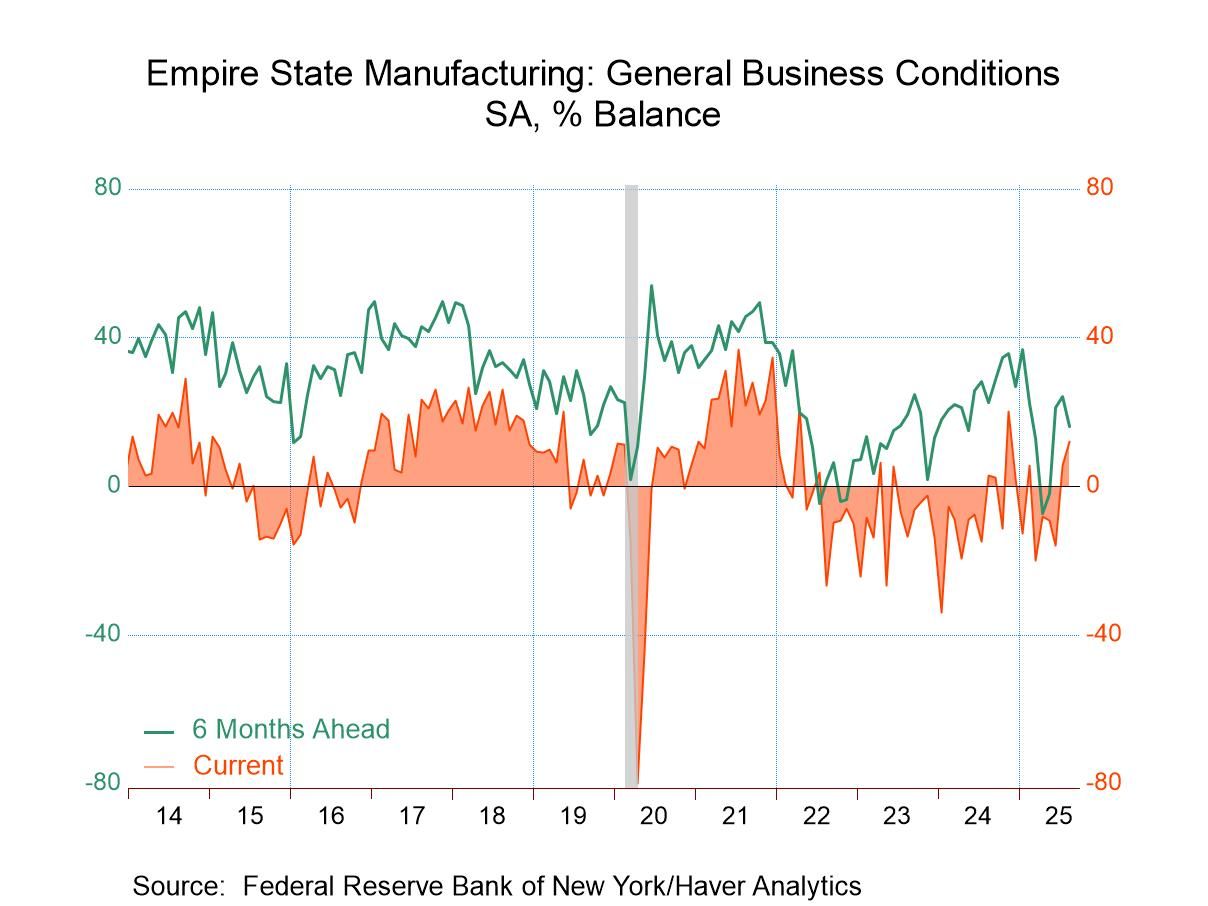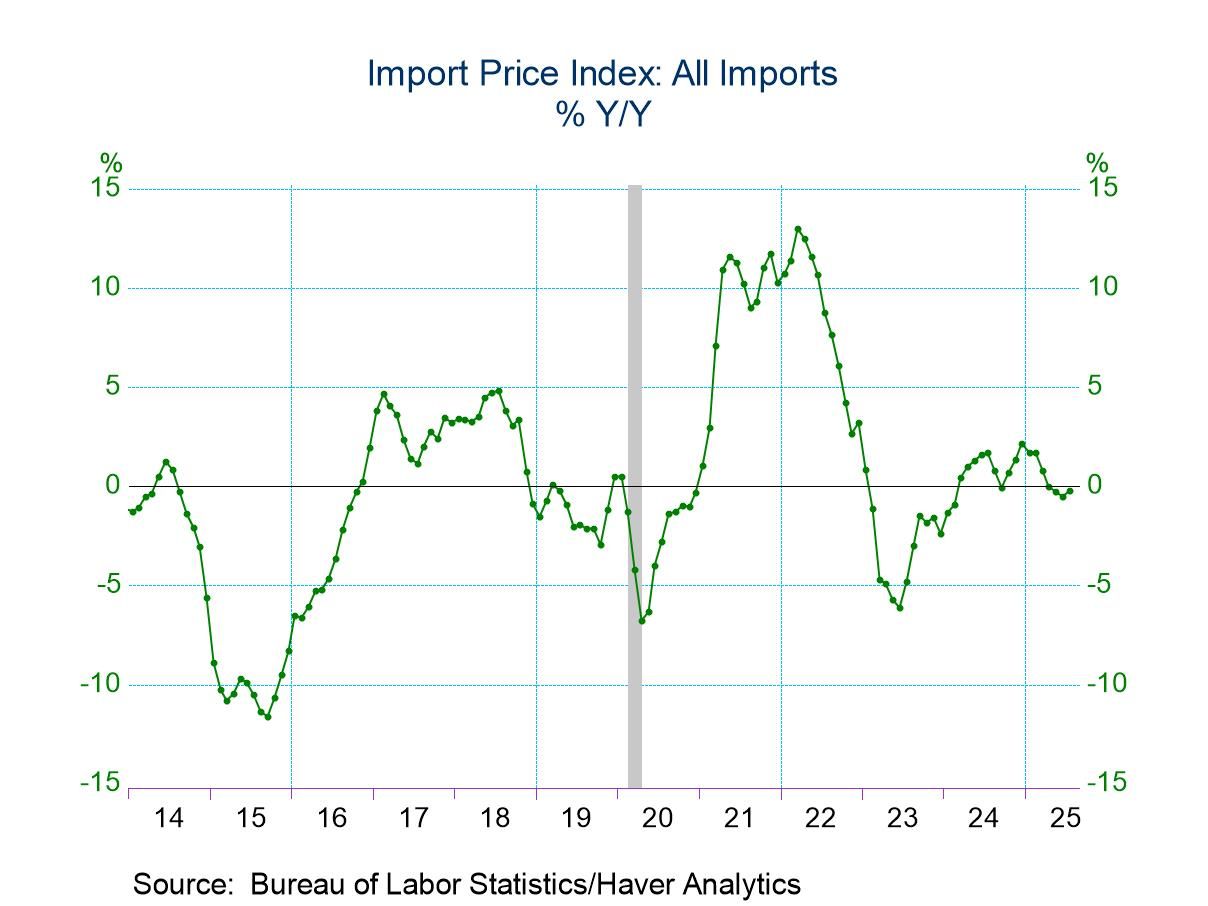 Global| Aug 20 2009
Global| Aug 20 2009Extended Benefits Dip
by:Tom Moeller
|in:Economy in Brief
Summary
The Labor Department indicated that initial claims for unemployment insurance increased unexpectedly for the second consecutive week to 576,000 after an upwardly revised rise to 561,000. The four-week moving average of claims, which [...]
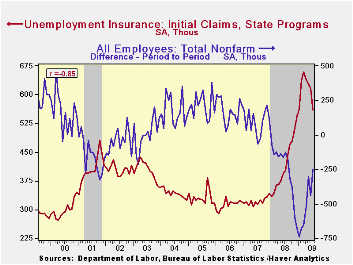
The Labor Department indicated that initial claims for unemployment insurance increased unexpectedly for the second consecutive week to 576,000 after an upwardly revised rise to 561,000. The four-week moving average of claims, which smoothes out some of the volatility in the weekly numbers, increased to 570,000 but was down from the April high of 658,750 and near its lowest level since late-January. A decline in weekly claims to 550,000 had been expected.
The latest figures cover the survey period for August nonfarm payrolls and initial claims were up 17,000 (3.0%) from the July survey period. During the last ten years there has been a negative 86% correlation between the level of initial claims and the m/m change in payrolls.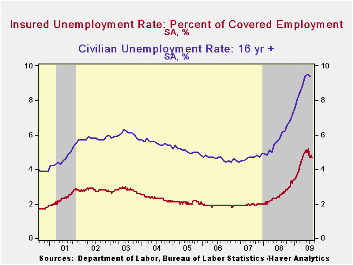
The Labor Department indicated that the largest increases in initial claims for the week ending August 8 were in Tennessee (+2,525), North Carolina (+2,469), Wisconsin (+2,078), Georgia (+1,753), and Washington (+1,697), while the largest decreases were in California (-5,635), Michigan (-1,490), Ohio (-951), Kentucky (-690), and Delaware (-226).
Continuing claims for unemployment insurance ticked higher in the latest week but remained down by nearly 10% from their late-June high, a decline which probably owes to the exhaustion of benefits. Continuing claims provide an indication of workers' ability to find employment and the level of 6,241,000 claims is up sharply from the year-ago level. The four-week average of continuing claims fell modestly to 6,266,000 and that was the lowest since late-April. The series dates back to 1966.
Extended benefits for unemployment insurance fell slightly w/w at the end of July. The slip to 400,779 compared to a high of 491,684 reached during the middle of the month. Extended benefits began to rise slowly in June of 2008 but surged by January.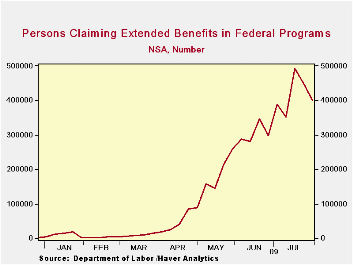
The insured rate of unemployment held steady at 4.7% which was the lowest level since mid-April. The rate reached a high of 5.2% during late-June. During the last ten years, there has been a 93% correlation between the level of the insured unemployment rate and the overall rate of unemployment published by the Bureau of Labor Statistics.
The highest insured unemployment rates in the week ending August 1 were in Puerto Rico (7.3 percent), Oregon (6.2), Pennsylvania (6.1), Michigan (5.9), Nevada (5.9), Wisconsin (5.5), California (5.3), Connecticut (5.3), New Jersey (5.3), North Carolina (5.1), and South Carolina (5.1). The lowest rates were in South Dakota (1.3) and North Dakota (1.5), Virginia (2.4), Wyoming (2.9), Texas (3.0), Maine (3.1), Colorado (3.2), Maryland (3.6), Minnesota (3.7), Florida (4.2), New York (4.2), Mississippi (4.3) and Georgia (4.7).
The unemployment insurance claims data is available in Haver's WEEKLY database and the state data is in the REGIONW database.
The Peak Oil Debate from the Federal Reserve Bank of Atlanta is available here.
| Unemployment Insurance (000s) | 08/14/09 | 08/07/09 | 07/31/09 | Y/Y | 2008 | 2007 | 2006 |
|---|---|---|---|---|---|---|---|
| Initial Claims | 576 | 561 | 554 | 31.5% | 420 | 321 | 313 |
| Continuing Claims | -- | 6,241 | 6,239 | 83.2% | 3,342 | 2,552 | 2,459 |
| Insured Unemployment Rate (%) | -- | 4.7 | 4.7 | 2.5 | 2.5 | 1.9 | 1.9 |
Tom Moeller
AuthorMore in Author Profile »Prior to joining Haver Analytics in 2000, Mr. Moeller worked as the Economist at Chancellor Capital Management from 1985 to 1999. There, he developed comprehensive economic forecasts and interpreted economic data for equity and fixed income portfolio managers. Also at Chancellor, Mr. Moeller worked as an equity analyst and was responsible for researching and rating companies in the economically sensitive automobile and housing industries for investment in Chancellor’s equity portfolio. Prior to joining Chancellor, Mr. Moeller was an Economist at Citibank from 1979 to 1984. He also analyzed pricing behavior in the metals industry for the Council on Wage and Price Stability in Washington, D.C. In 1999, Mr. Moeller received the award for most accurate forecast from the Forecasters' Club of New York. From 1990 to 1992 he was President of the New York Association for Business Economists. Mr. Moeller earned an M.B.A. in Finance from Fordham University, where he graduated in 1987. He holds a Bachelor of Arts in Economics from George Washington University.



